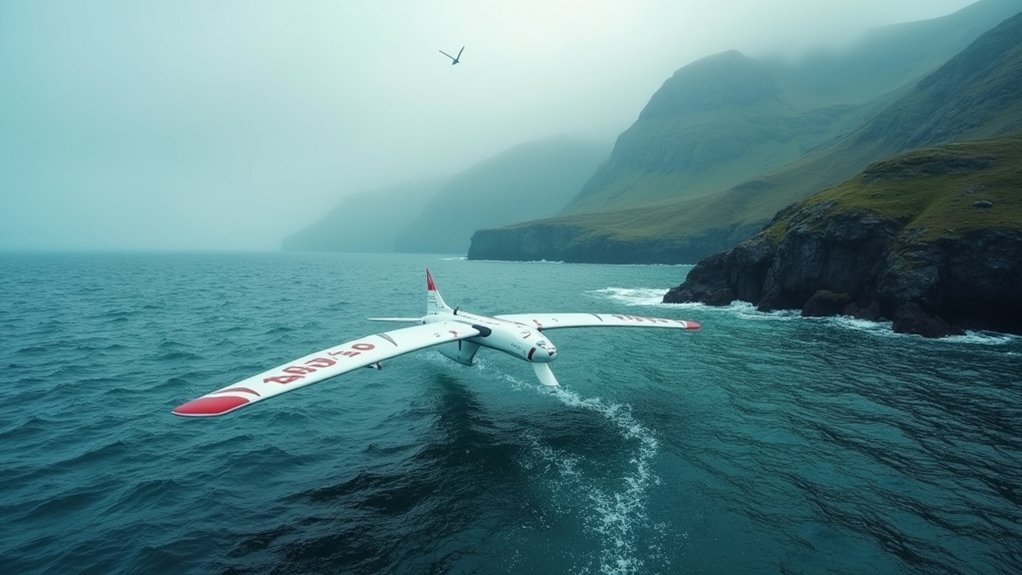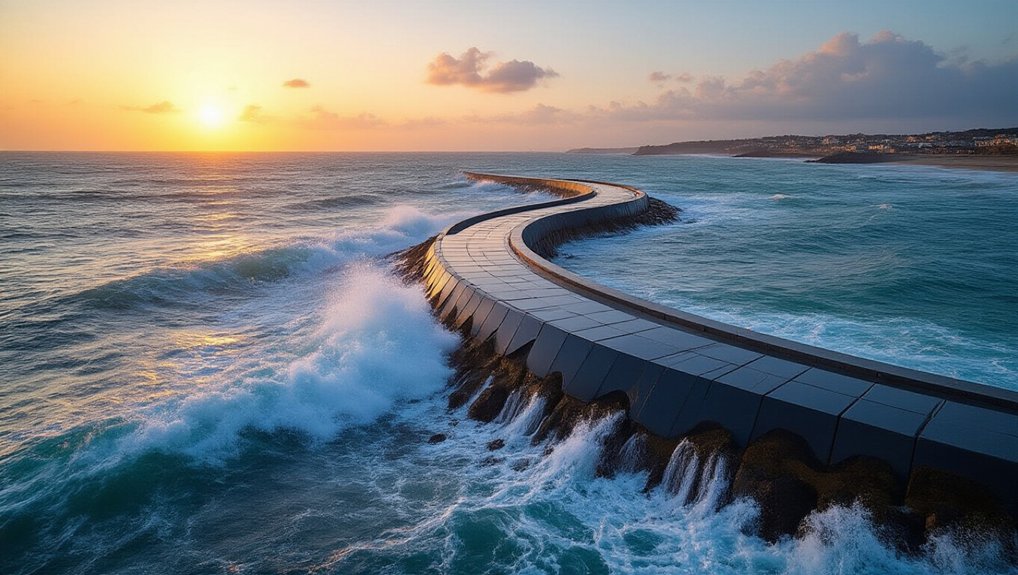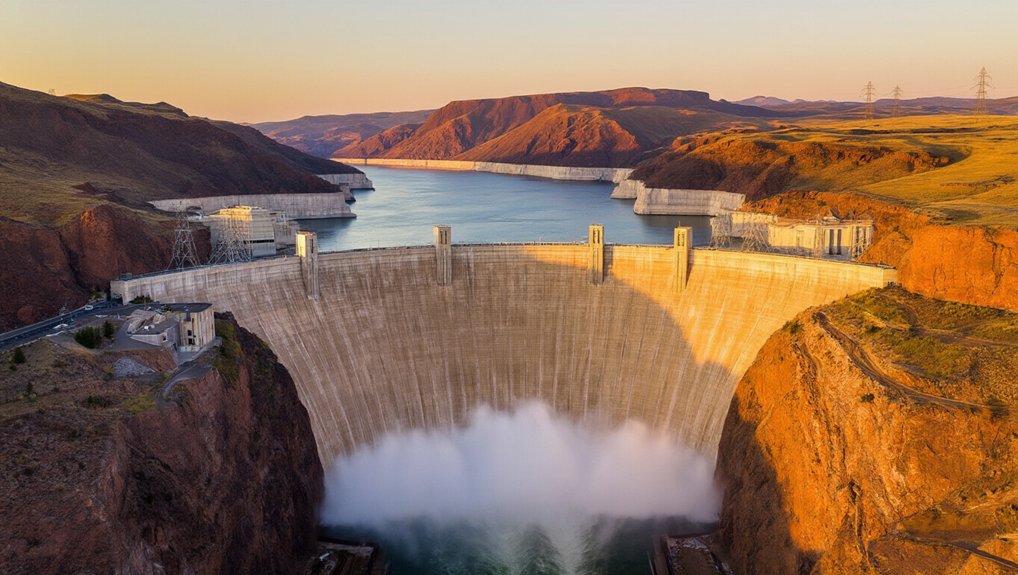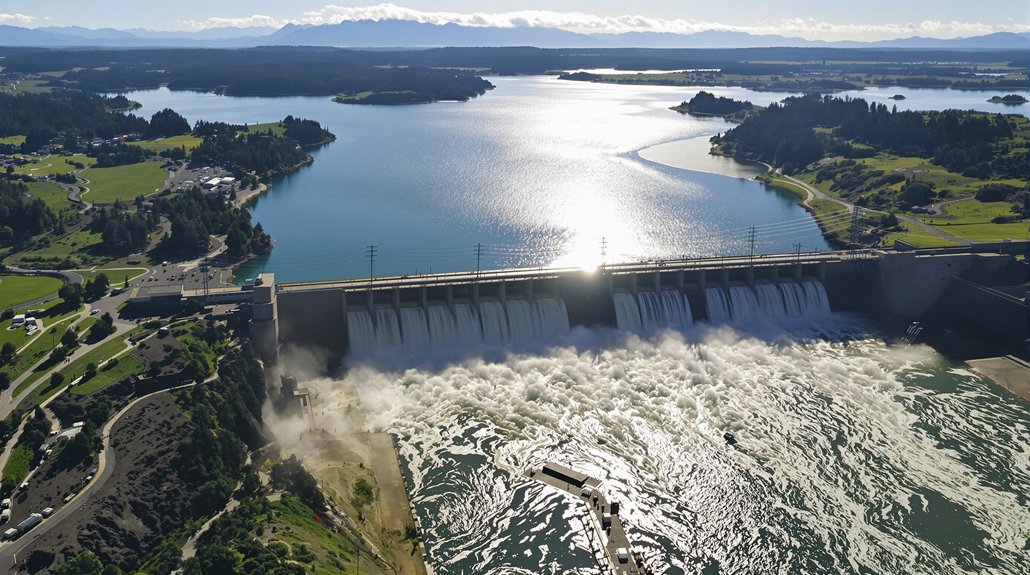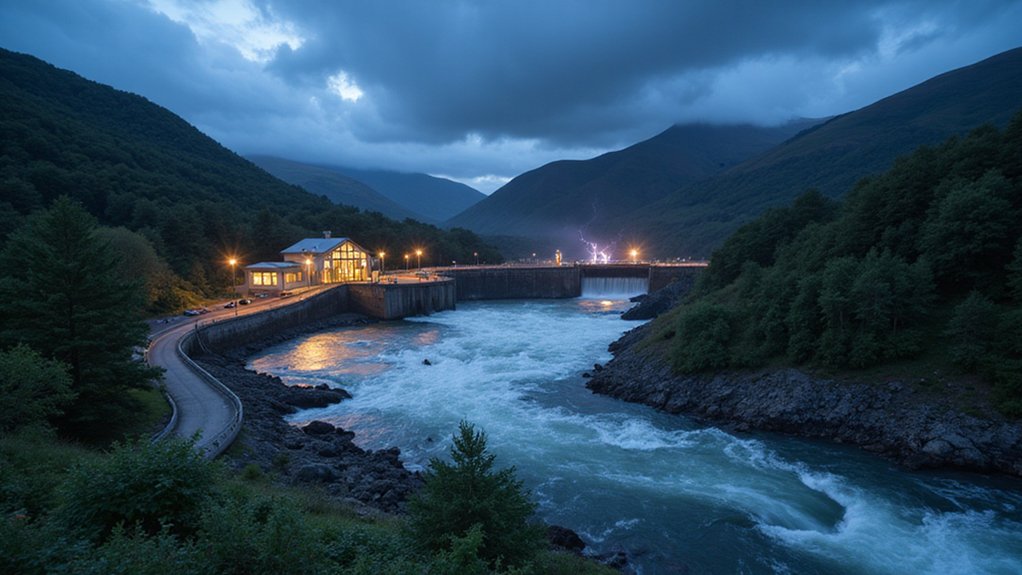The Faroe Islands are embracing Luna 12, a tidal kite system that produces electricity from predictable lunar tides. This 1.2 MW system moves underwater in figure-eight patterns, capturing energy to power 200 homes. Minesto plans seven array sites totaling 200 MW, potentially supplying 40% of the islands’ electricity needs. This technology reduces fossil fuel dependence, creates green jobs, and produces zero emissions. The Faroe’s approach could soon ripple through coastal communities worldwide.
While fossil fuels have dominated global energy production for decades, the Faroe Islands are harnessing a powerful alternative that’s been right under their noses all along: lunar tides. This North Atlantic island group is pushing toward a bold goal of 100% renewable electricity by 2030, with tidal power as their secret weapon.
The Luna 12 tidal kite system is at the center of this transformation. Rated at 1.2 MW, this innovative technology can power about 200 homes annually. The global potential for this kind of energy is estimated at 650 gigawatts, exceeding current nuclear power capacity. The system works by employing a submerged “kite” that moves in a figure-eight pattern through tidal currents, multiplying water flow speed and energy output.
Lunar-powered innovation transforms ocean currents into electricity through an underwater kite’s graceful figure-eight dance.
Unlike unpredictable wind or solar power, lunar tides are remarkably consistent. The moon’s gravitational pull creates reliable tidal flows that generate energy around the clock. This predictability makes tidal power particularly valuable for stabilizing electrical grids.
Minesto, the company behind the Luna 12, plans to install seven tidal array sites totaling 200 MW in the Faroe Islands. These installations could supply 40% of the islands’ electricity needs, directly replacing coal and oil-fired generation. The collaboration with power company Sev will be crucial for implementing these tidal energy solutions.
The economic benefits are substantial. By reducing dependence on imported fossil fuels, the Faroe Islands can enhance their energy security and protect themselves from volatile oil and gas prices. The shift also creates local jobs in green technology sectors.
Environmental monitoring is built into the Luna 12 system. Real-time data collection allows engineers to assess impacts on marine life and make adjustments as needed. The technology produces zero direct emissions, supporting the islands’ commitment to carbon neutrality. Similar to marine energy technologies being developed elsewhere, tidal power represents an important frontier in the renewable energy landscape.
The modular design of the Luna 12 allows for gradual scaling. The Vestmannasund installation serves as a testbed, with expansions planned based on performance data. This approach minimizes investment risks while maximizing output.
If successful, the Faroe Islands may provide a blueprint for coastal communities worldwide to break free from fossil fuel dependence using the ancient, predictable power of lunar tides.
References
- https://tethys.pnnl.gov/project-sites/minesto-faroe-islands
- https://www.sustainability-times.com/low-carbon-energy/moon-power-becomes-reality-as-these-islands-harness-lunar-energy-to-produce-electricity-and-challenge-the-global-energy-order/
- https://www.skf.com/us/news-and-events/news/2025/2025-03-27-a-space-program-that-never-leaves-earth
- https://www.renewableenergymagazine.com/ocean_energy/the-faroe-islands-a-space-program-that-20250327
- https://www.youtube.com/watch?v=5tkgTrkKoe0
